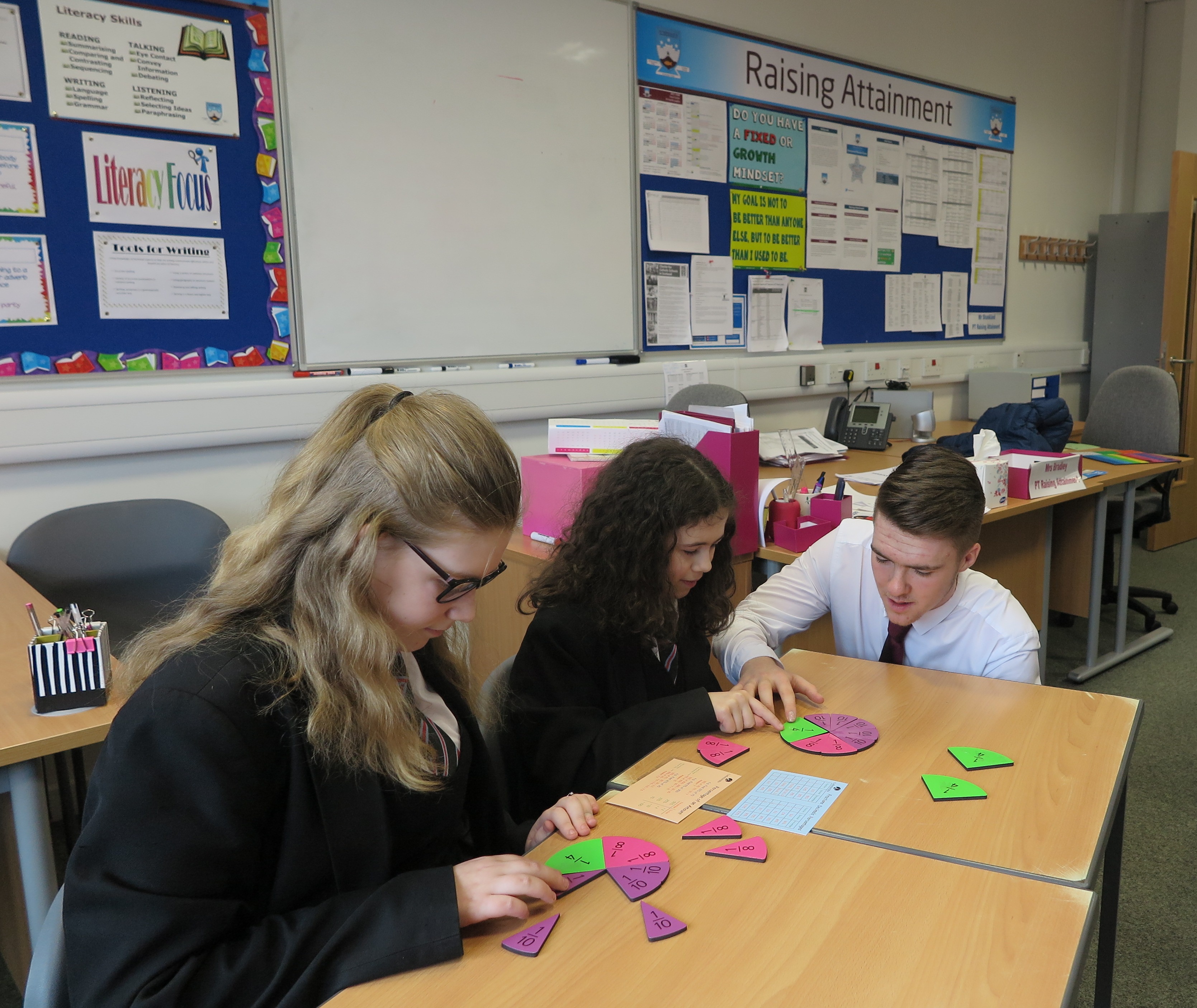Embedding the Pupil Equity Fund within whole school inclusive approaches
 Explore this exemplar
Explore this exemplar
What was done?
St Ninian's High School in East Dunbartonshire views raising attainment for young people affected by poverty as a whole school approach embedded within existing structures. Using HGIOS?4, the school has self-evaluated to identify improvement plan priorities, and within these has identified the poverty-related attainment gap. Staff use challenge questions across the QI’s on a monthly basis and are confident in self-evaluation. The school maintains a high focus on high quality learning and teaching in all classes at all times as a key driver for Excellence and Equity.
Staff volunteered for the Pupil Equity Funding (PEF) steering group, and an action plan was created using evidence-based research to inform practice. Key staff were appointed to create a dedicated team with remits addressing the poverty-related attainment gap. This team complemented existing universal and targeted approaches embedded within the school. All work was strategically planned to be sustainable within a reasonable timescale.
In addition to all staff understanding and improving core pedagogy to raise attainment, the school created an Achievement Resource Centre (ARC) to complement existing structures. ARC is a hub with focused staff to raise the profile of equity and enables core staff to focus this priority with a view to sustainability.
 Why?
Why?
Looking outwards, visiting other schools and through professional dialogue, the ARC was created to complement existing practice. It is an effective way to target PEF and ensure impact across the school and for targeted groups of children.
What was the impact?
- Development of a manageable tracking mechanism across S1-S6 that complements existing processes and provides reliable data to identify and track target groups of young people.
- Existing monitoring processes include the progress of young people affected by poverty.
- Staff awareness of barriers to progress for young people affected by poverty.
- Parental engagement in literacy and numeracy workshops to develop understanding of numeracy methodologies and literacy benchmarks.
- Raised attainment in literacy- improvement in reading age of S2 target group.
- Improvement in numeracy skills of S1 target group.
- More young people identified within equity profile attending supported study.
- Improved attendance and engagement.
Download(s)
 PDF file: St Ninian's High School Improvement Plan 2017-18 (1 MB)
PDF file: St Ninian's High School Improvement Plan 2017-18 (1 MB)
 PDF file: ARC Pupil Equity Plans 2017-18 (212 KB)
PDF file: ARC Pupil Equity Plans 2017-18 (212 KB)
 PDF file: Welcome to the Achievement Resource Centre (1.3 MB)
PDF file: Welcome to the Achievement Resource Centre (1.3 MB)
![]() PPT file: Literacy evening writing workshop (573 KB)
PPT file: Literacy evening writing workshop (573 KB)
